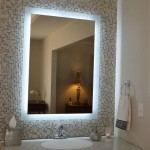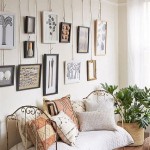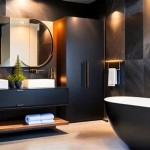Decorating With Mirrors In Living Room
Mirrors are more than just reflective surfaces; they are powerful design elements that can transform a living room. Strategically placed mirrors can enhance natural light, create the illusion of greater space, and add a touch of elegance and sophistication. When thoughtfully incorporated, mirrors can become a focal point, complementing existing décor and reflecting the personality of the homeowner. This article explores the diverse ways in which mirrors can be used to elevate the aesthetic and functional qualities of a living room, offering insights into size, placement, style, and complementary elements.
Maximizing Light and Space
One of the most significant benefits of incorporating mirrors into a living room design is their ability to amplify natural light. A strategically positioned mirror can capture and reflect sunlight streaming in from windows, effectively brightening the entire space. This is particularly useful in rooms with limited natural light or those facing away from direct sunlight. The reflected light can reach into darker corners, reducing the need for artificial illumination during the day and creating a more welcoming and cheerful atmosphere.
Beyond brightness, mirrors also create the illusion of more space. By reflecting the existing room, a mirror effectively doubles the perceived size of the area. This is especially advantageous in smaller living rooms, where even a modestly sized mirror can make a significant difference. The placement of the mirror is crucial in achieving this effect. For instance, a large mirror placed on a wall opposite a window can create the impression of an additional window, expanding the visual boundaries of the room.
When using mirrors to maximize light and space, consider the existing elements of the room. Ensure that the mirror reflects something aesthetically pleasing, such as a piece of art, a decorative plant, or a well-arranged seating area. Avoid positioning the mirror in a way that it reflects clutter or an unappealing view, as this will only amplify the negative aspects of the room. Experiment with different sizes and shapes to find the best fit for the space and desired effect. A long, rectangular mirror can visually lengthen a room, while a square mirror can add a sense of balance and symmetry.
Creating a Focal Point
Mirrors can serve as a striking focal point in a living room, drawing the eye and adding visual interest to the space. A large, statement mirror can instantly become the center of attention, transforming a plain wall into a captivating feature. The frame of the mirror plays a crucial role in its aesthetic impact. Ornate, decorative frames can add a touch of glamour and sophistication, while simple, minimalist frames offer a more contemporary and understated look.
Consider the style of the living room when selecting a mirror to serve as a focal point. In a traditional setting, a large, antique-style mirror with an ornate frame would be a suitable choice. In a modern or contemporary space, a frameless mirror or one with a sleek, metallic frame would be more appropriate. The size of the mirror should be proportionate to the wall on which it is placed. A mirror that is too small will look insignificant, while one that is too large may overwhelm the space.
Another way to create a focal point with mirrors is to use a collection of smaller mirrors arranged in an interesting pattern. This can be a particularly effective way to add visual interest to a large wall. The mirrors can be of varying sizes and shapes, but they should be unified by a common theme, such as a similar frame style or color palette. This approach allows for creativity and personalization, making the focal point truly unique.
Incorporating Different Mirror Styles and Placements
The style and placement of mirrors can significantly impact the overall aesthetic of a living room. There is a wide array of mirror styles to choose from, each offering a unique look and feel. From antique mirrors with distressed finishes to sleek, modern mirrors with clean lines, the options are virtually limitless. The choice of style should complement the existing décor of the living room and reflect the personal taste of the homeowner.
Floor-length mirrors are a popular choice for living rooms, particularly in smaller spaces. These mirrors can create the illusion of more height and space, making the room feel larger and more open. They are also practical for checking one's appearance before leaving the house. Floor-length mirrors can be leaned against a wall for a casual and relaxed look, or they can be mounted on the wall for a more permanent and polished appearance.
Wall-mounted mirrors are another versatile option for living rooms. They can be hung individually or in groups, and they can be placed at varying heights to create visual interest. When hanging mirrors, consider the surrounding elements of the room. Ensure that the mirror reflects something aesthetically pleasing, such as a piece of art, a decorative plant, or a well-arranged furniture grouping. Avoid placing the mirror in a way that it reflects a blank wall or an unsightly view. The height at which the mirror is hung is also important. Ideally, the center of the mirror should be at eye level for the average person.
Another innovative approach is to use mirrored furniture. Coffee tables, side tables, and even console tables with mirrored surfaces can add a touch of glamour and sophistication to a living room. These pieces reflect light and create a sense of openness, making the room feel brighter and more spacious. Mirrored furniture can be particularly effective in smaller living rooms, where it can help to maximize the available space.
Complementary Elements and Considerations
While mirrors are a powerful design tool, they should be used in conjunction with other complementary elements to create a cohesive and harmonious living room. The lighting, color palette, and furniture should all work together to enhance the overall aesthetic of the space. For example, a mirror placed near a window can reflect natural light, but it can also reflect the light from a carefully chosen lamp, adding warmth and ambiance to the room.
The color palette of the living room can also influence the impact of mirrors. Light and neutral colors tend to reflect more light, enhancing the effect of a mirror in creating brightness and spaciousness. Darker colors, on the other hand, can absorb light, which may reduce the effectiveness of a mirror in brightening the room. However, a mirror can still be used to add visual interest and depth to a dark-colored living room, particularly when paired with contrasting elements.
The furniture in the living room should also be considered when placing mirrors. Avoid placing a mirror directly opposite a plain wall, as this will simply reflect the wall and not add any visual interest. Instead, position the mirror to reflect a well-arranged furniture grouping, a piece of art, or a decorative plant. This will create a more dynamic and engaging visual experience.
Finally, it's important to consider the maintenance of mirrors. Mirrors require regular cleaning to maintain their reflective properties and prevent the buildup of dust and grime. Use a soft cloth and a mild cleaning solution to gently wipe the surface of the mirror. Avoid using abrasive cleaners or materials, as these can scratch or damage the mirror's surface. Regular cleaning will ensure that the mirror continues to enhance the beauty and functionality of the living room.
Mirrors, when thoughtfully integrated into a living room's design, transcend their basic function, becoming pivotal components that enhance aesthetics and functionality. Mastering their placement, recognizing the visual impact of various styles, and acknowledging complementary elements are crucial for achieving the desired ambiance. Through careful planning and execution, mirrors can transform a living room into a more inviting, spacious, and visually captivating environment.

How To Decorate With Mirrors Decorating Ideas For

Mirror Decoration Ideas For Living Room Doğtaş

14 Mesmerizing Living Room Mirror Ideas The Best Mirrors

5 Easy Ways Living Room Mirrors Can Amp Up Your Space

5 Easy Ways Living Room Mirrors Can Amp Up Your Space

Mirror Decoration Ideas For Living Room Doğtaş

6 Ways Of Decorating Your Living Room With Mirrors Homelane Blog

20 Incredibly Clever Ways To Decorate With Mirrors In A Small Living Room Michael Helwig Interiors

How To Decorate With Mirrors Decorating Ideas For

Wall Mirror Design Ideas For Your Home Cafe
Related Posts







